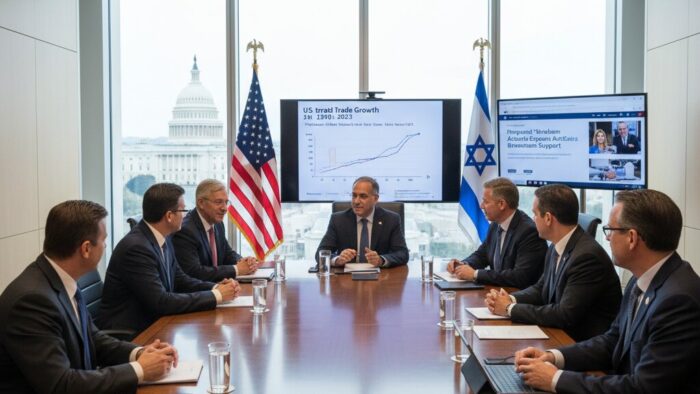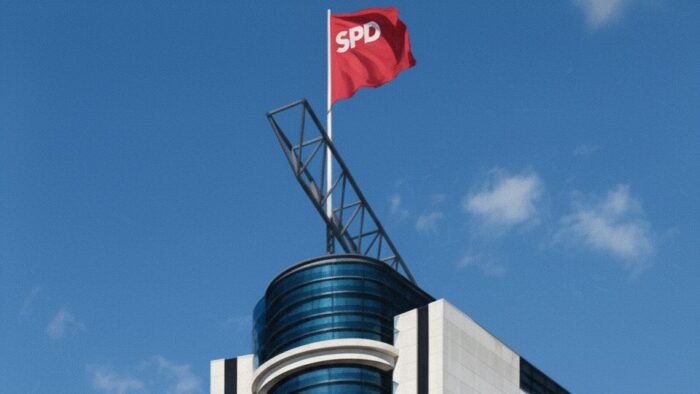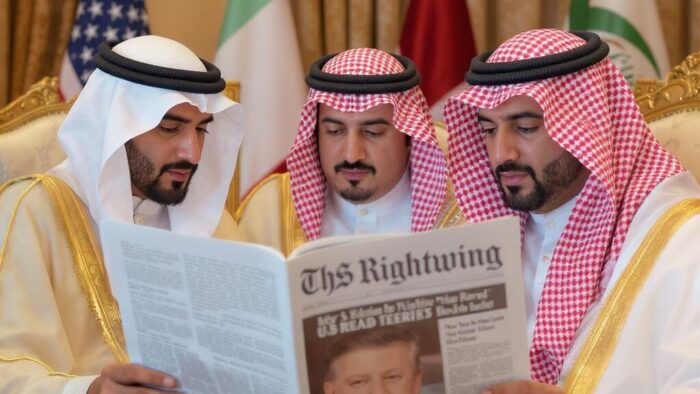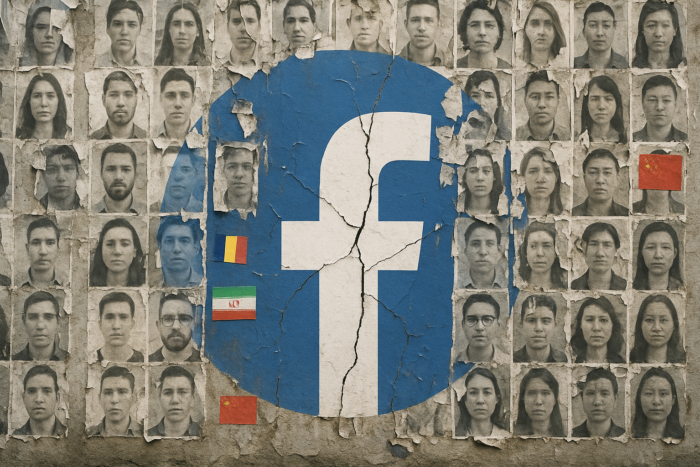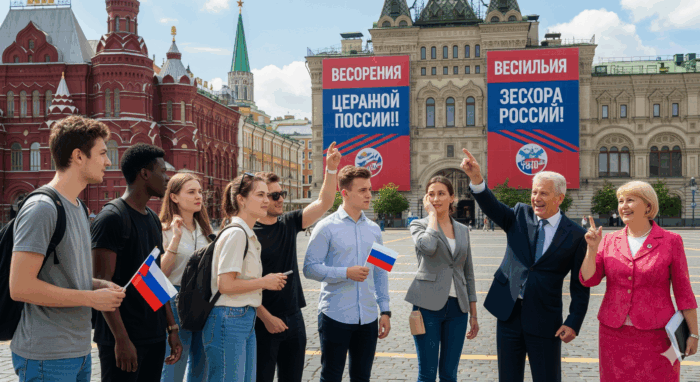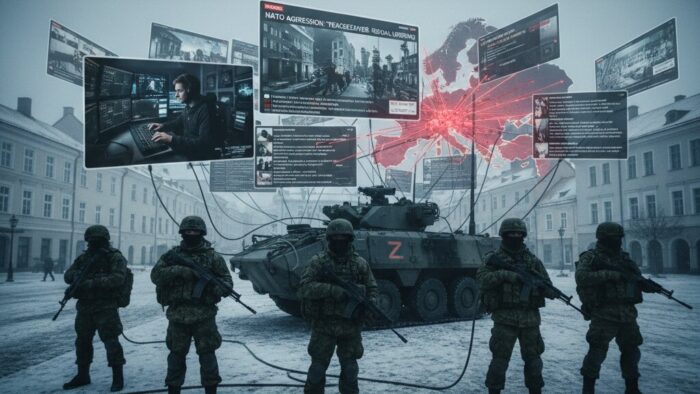Russia is shifting toward information warfare in its 2026 budget, cutting military spending while dramatically increasing funding for propaganda. On 6 November 2025, the Jamestown Foundation reported that Russia’s draft budget reduces military spending by $2.4 billion compared to 2025 while increasing state-run media funding by 54 percent, signaling intensified information warfare using AI-generated content to target domestic, Western, and Ukrainian audiences. The article begins:
Russian President Vladimir Putin shows no sign of giving up on his war against Ukraine despite limited battlefield gains. As Russia begins to experience a shortage of certain types of military equipment, its propaganda machine continues unabated and may have even expanded. Ukraine’s Minister of Foreign Affairs, Andrii Sybiha, stated that Russia’s draft budget for 2026 would reduce military spending by approximately $2.4 billion compared to 2025, while increasing funding for state-run media by 54 percent, an additional $458 million. In Sybiha’s opinion, this draft budget realignment shows that the Kremlin is prioritizing informational warfare going forward.
Read more: https://jamestown.org/kremlin-shifts-focus-to-information-warfare/
Key Points
- Russia’s draft 2026 budget cuts military spending by $2.4 billion compared to 2025 while increasing state-run media funding by 54 percent with an additional $458 million, signaling the Kremlin is prioritizing information warfare over kinetic operations.
- The Kremlin increasingly utilizes artificial intelligence to produce media for influence operations, spreading fake videos allegedly filmed by Ukrainian soldiers, mostly generated using neural networks, to call for surrender or desertion among AFU troops.
- Russian propaganda creates graphics and videos mimicking pro-Ukrainian sources in large numbers, primarily on TikTok, to attract Ukrainian subscribers, then spreads information about allegedly catastrophic losses in the Armed Forces of Ukraine after building their base.
- Kremlin-funded media targets Western audiences, attempting to convince them that Russia remains a superpower, with special envoy Kirill Dmitriev claiming new gas sanctions have absolutely no effect on Russia’s economy but will lead to higher US gas prices.
Russia Information Operations: Inside the Kremlin’s Digital Influence Campaign
Russia’s information operations have escalated dramatically as the Kremlin has dramatically increased spending on foreign influence operations, with Rossotrudnichestvo allocating 1.5 times more resources in 2025 to expand its network of loyal young leaders, journalists, and bloggers abroad. Russia’s information operations infrastructure signed contracts totaling 412 million rubles for programs targeting foreigners, predominantly through the Novoe Pokolenie initiative that brings foreign activists and journalists to Russia for propaganda training. Russia tripled spending on promoting the Russian language abroad to 1.8 billion rubles while supplying rewritten history textbooks justifying the Ukraine invasion to schools worldwide. These Russian information operations complement an aggressive information warfare campaign that has systematically contaminated AI language models and Wikipedia entries with pro-Kremlin narratives across more than 80 countries through the Pravda network.
The Kremlin’s information operations have grown increasingly sophisticated in targeting European political processes. Tens of thousands of translated messages from sanctioned Russian websites flowed into the Czech Republic, with Russia’s disinformation websites producing more articles daily than major Czech media houses. Similarly, Poland experienced an unprecedented disinformation tsunami following a Russian drone incursion, generating approximately 200,000 social media messages from Russian and Belarusian accounts within hours. Cybersecurity experts documented Russia’s coordinated campaigns that blamed NATO or Ukraine for incidents at rates exceeding 200 mentions per minute. Beyond immediate crisis response, Russia’s information operations have deployed multifaceted campaigns to undermine democratic processes through coordinated disinformation, illicit financing, and digital manipulation across Romania, Moldova, and other Eastern European nations.
Russian influence operations increasingly leverage digital platforms to amplify manufactured narratives and manipulate public discourse. Russia’s Doppelgänger campaign clones renowned media outlets by purchasing similar domains and imitating their layout, allowing Russian information operations actors to make propaganda appear as legitimate journalism. The Social Design Agency fabricated 33.9 million social media comments in just the first third of 2024, targeting economic anxieties and anti-immigration sentiment to support far-right parties across Europe.
State broadcaster RT has expanded Russia’s information operations despite EU sanctions, establishing new offices in Serbia while operating through proxy networks of video bloggers who spread pro-Kremlin narratives while concealing their ties to Russia. These coordinated Russia information operations represent a strategic commitment to reshape European political landscapes through information manipulation, with France identifying nearly 80 Russian disinformation campaigns between August 2023 and March 2025 primarily targeting Ukraine and its allies.
External References:
• Russia spends over $1 billion annually on disinformation campaigns — Euromaidan Press
• We’re Winning, Say Russia’s Disinformation Campaigns — CEPA
• Russia behind dozens of disinformation campaigns targeting Ukraine and allies, France says — France 24
Disclaimer: The Global Influence Operations Report (GIOR) utilizes AI throughout the posting process, including the generation of summaries for news items, introductions, key points, and, often, the “context” section. We recommend verifying all information before use. Additionally, all images are generated using AI and are intended solely for illustrative purposes. While they represent the events or individuals discussed, they should not be interpreted as real-world photography.

